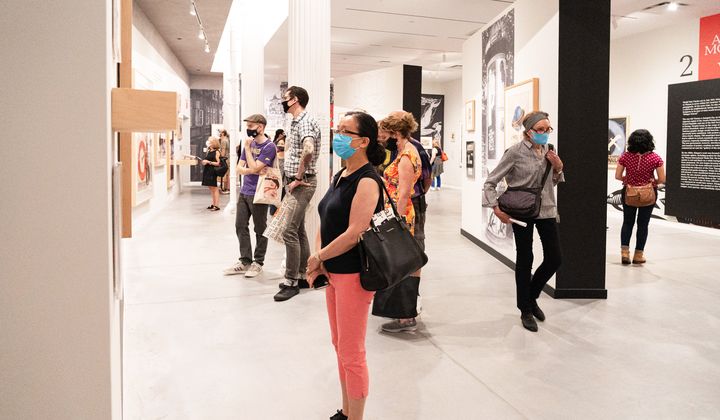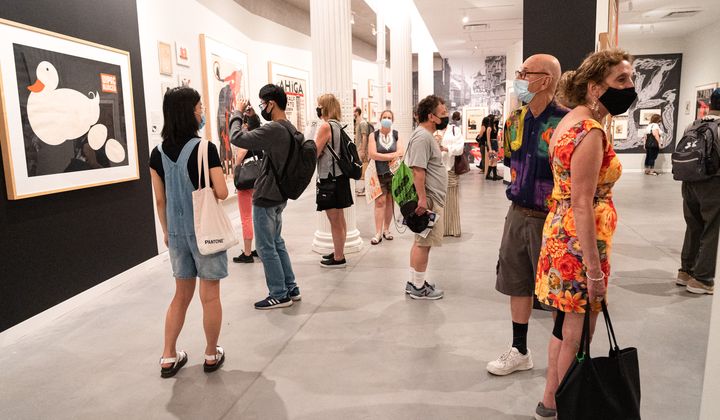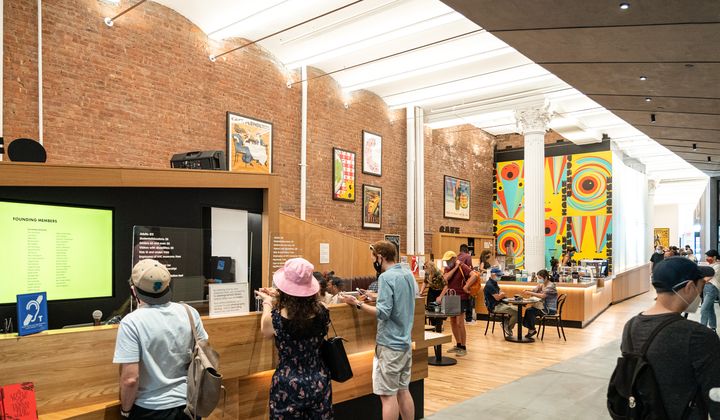Poster House
119 West 23rd Street, New York, NY 10011 - United States
Poster House is the first and only museum in the United States dedicated to the art and history of the poster.
Through exhibitions, events, and publications, Poster House presents a global view of posters from their earliest appearance in the late 1800s, to their present-day use. Poster House takes its mission from the medium, aiming to engage and educate all audiences as we investigate this large format graphic design and its public impact.
Exhibits
Exhibit Description:
Masked Vigilantes
September 8, 2022-February 12, 2023
Made to appeal to broad audiences, posters both reflect and shape popular culture. They can be used by anyone from the largest corporations to DIY party promoters—and, just as they are a part of the city, they become a part of us when we interact with them.
Still, posters tend to be a one-way street, communication from brand or promoter to person. What if renegade artists steal that powerful visual language and twist it to best demonstrate the democratic potential of the medium?
Masked Vigilantes on Silent Motorbikes is not an exhibition of posters as art, but of art that incorporates found, re-configured, and even shredded posters as raw material for making new art, repurposing the poster’s innate ability to communicate succinctly and en masse.
Exhibition Description:
Air-India’s Maharaja: Advertising Gone Rogue
September 9, 2022–February 12, 2023
“Rogue’s Gallery,” published by Air-India in 1977, was a catalog showcasing the airline’s most iconic travel posters produced from 1946 to 1972. The star of these posters was Air-India’s beloved mascot, the Maharaja, alias “the Rogue.” Conceived in 1946 by Bobby Kooka and illustrated by Umesh Rao, the Maharaja was initially designed for an inflight memo pad. Characterized by his oversized mustache, striped turban, corpulent belly, and aquiline nose, the mascot would go on to become the face of the airline and propel the company to the forefront of advertising genius in the mid-20th century.
Air-India established an in-house art studio and also commissioned international artists to depict the Maharaja in all his antics. One of the world’s least-inhibited travelers, the Maharaja developed a reputation for his daring and panache as he adopted different personas in every destination—a snake charmer in India, a monk in Rome, a lover boy in Paris, and even a playboy bunny in New York. The Maharaja, however, didn’t get away without his fair-share of controversy—Air-India was repeatedly asked by prominent international figures to rescind advertisements they found to be shocking or insulting.
Despite the complaints of ill-humored politicians, the Maharaja and his cutting-edge design earned the company a myriad of advertising awards and a loyal legion of fans. While the Maharaja remains Air-India’s mascot to this day, he is most fondly remembered throughout the world for his role in India’s golden age of advertising.
Participation in Museum Day is open to any tax-exempt or governmental museum or cultural venue on a voluntary basis. Smithsonian magazine encourages museum visitation, but is not responsible for and does not endorse the content of the participating museums and cultural venues, and does not subsidize museums that participate.




